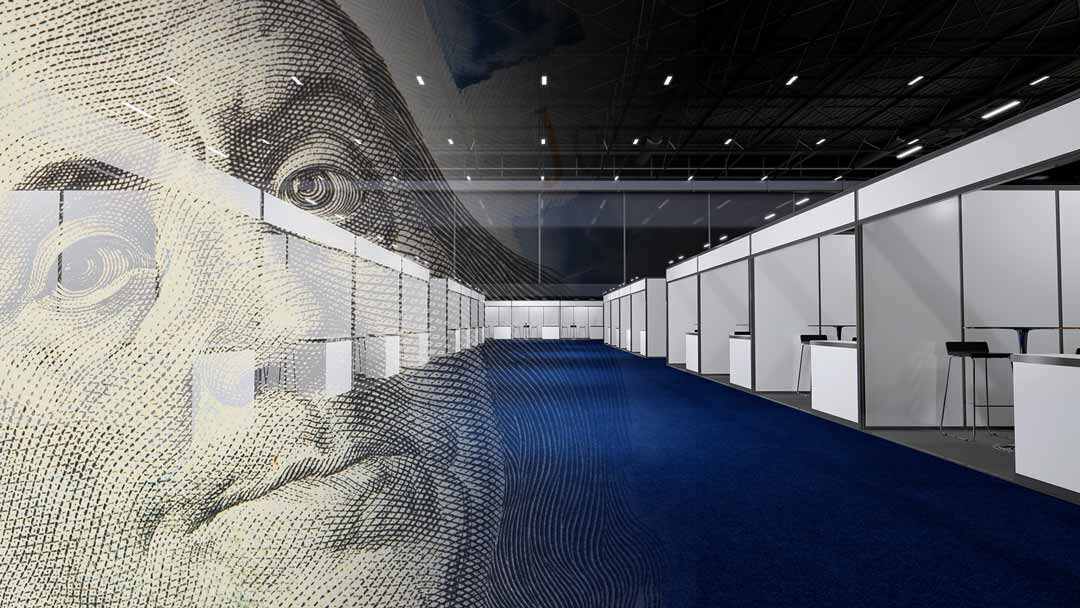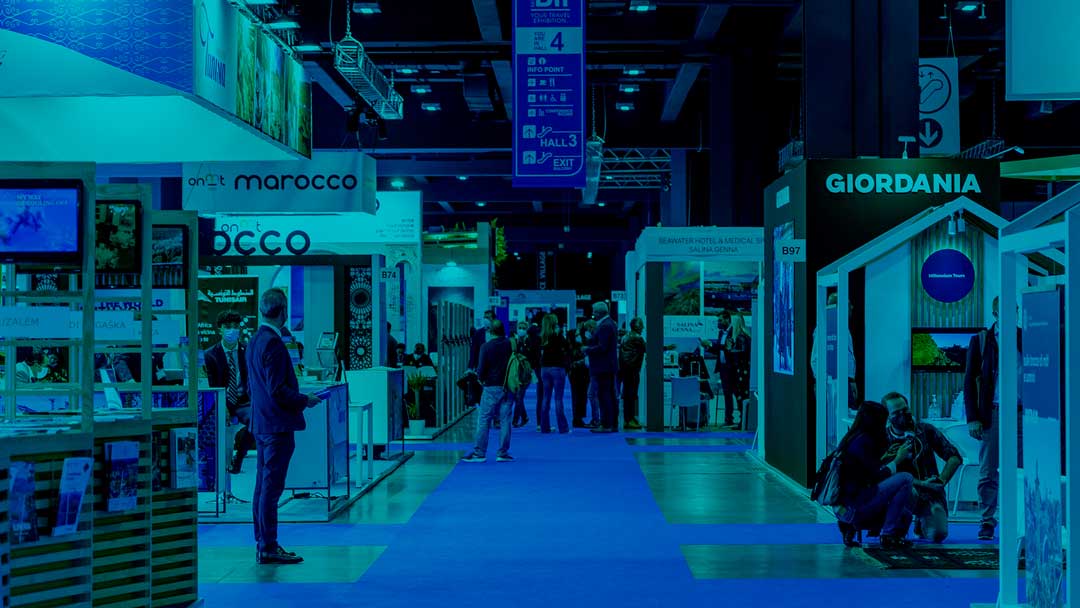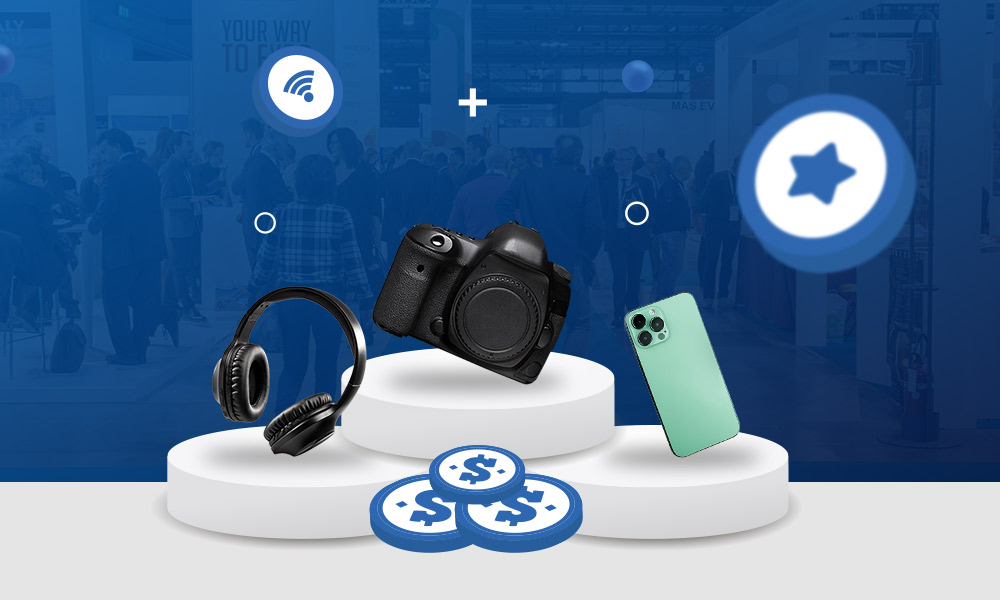How Much Does it Cost to Exhibit at a Trade Show

Have you ever wondered how much does it cost to exhibit at a trade show? Trade show booth cost is a major factor for businesses planning their displays. The expenses for trade show displays can vary widely, impacting time and money.
Trade shows transcend mere gatherings; they present opportunities to showcase your brand, engage with potential clients with innovative booths and expand your business. However, seizing these opportunities comes with substantial costs. The real question is: how can you enhance your return on investment (ROI) without overspending?
Every aspect of the trade show budget matters, from booth design to logistical arrangements. Let’s explore tactics to maximize your trade show funds while crafting an unforgettable experience for your target audience.
Understanding Trade Show Costs

Navigating the maze of trade show investments requires a savvy blend of strategy and insight. Let’s break down the key components that shape your budget, making your trade show journey impactful and manageable.
Booth Space Rental
- Size & Location
The size and location of your booth space are akin to the real estate of the trade show floor. Opting for a larger footprint in a prime area can significantly impact your visibility but comes with a notable price tag. For instance, reserving a 20×20 booth space might run around $12,000, not including additional costs like travel and marketing, bringing the total to about $20,000 for the space alone.
- Prime Locations: Entrance areas, corners, and main aisles.
- Cost Factors: Visibility, foot traffic potential.
A strategic balance between visibility and budget constraints is essential. Even a well-designed booth in a quieter area can draw attention with the right marketing strategy.
Booth Design and Fabrication
- Design Options: From custom-built to modular designs, your booth sets the stage for your brand’s story.
- Custom-Built: Tailor-made for uniqueness, but costs can range widely, from $5,000 to $50,000 or more, depending on complexity and size.
- Rental/Modular: More budget-friendly, offering flexibility and adaptability.
- Cost Influencers:
- Materials: The choice between sustainable or standard materials affects cost.
- Complexity & Tech: Digital displays and interactive elements may add to the budget but enhance engagement.

Additional Expenses
- Furniture: Chairs, tables, and display counters are essential for a functional and inviting booth. Depending on the quality and design, renting these items can cost between $100 and $500. For example, a simple chair might be at the lower end, while stylish, brand-centric counters could be more expensive.
- Signage & Lighting: Effective signage is crucial for brand visibility and can vary greatly, from $250 for basic banners to over $2,000 for high-quality, custom graphics. Lighting setups can range from $100 for simple spotlights to over $1,000 for advanced LED systems that enhance product displays and booth ambiance.
- Connectivity & Power: Internet access is vital for demonstrations and operations, and costs range from $100 to $1,000 per day, depending on the speed and data requirements. The electricity required to power your booth might add another $200 to $500 to your bill, depending on consumption and show duration.
- Drayage: Refers to handling materials to and from your booth space. It’s one of the most variable and potentially surprising costs, often calculated by weight. You might expect to pay between $75 and $150 per hundred pounds, with a minimum charge applied regardless of weight. This means even tiny booths could face significant drayage fees.
Prices can vary widely based on specific trade show policies, the location of the event, and the range of services vendors offer. Always consult trade show organizers and service providers for precise quotes and budget accordingly to avoid unexpected expenses.
Controlling Your Budget

Smart budgeting is not just about cutting costs—it’s about making every dollar work harder for you. Let’s explore some strategies to keep your expenses in check without compromising on impact.
Set a Realistic Budget
- Start with a Plan: Before entering the trade show scene, outline a comprehensive budget that includes all potential costs, from booth space rental to additional expenses like furniture and internet access. Understanding the full scope of costs allows you to allocate resources wisely.
- Prioritize Based on Goals: Not all investments yield the same return. Decide what’s crucial for your brand’s presence—a prime location, an eye-catching booth design, or cutting-edge tech. Allocate more of your budget to these areas and look for savings elsewhere.
Explore Cost-Effective Options
- Modular Displays: These versatile setups offer a professional look with the flexibility to adapt to different spaces and shows, often at a lower cost than custom-built booths.
- Shared Booths or Co-Exhibiting: Joining forces with complementary businesses can drastically reduce costs. It’s a chance to share space and the spotlight, doubling your network potential. However, ensure your brands align well to avoid message dilution.
- Pros and Cons:
- Modular Displays: + Flexible and reusable; – May lack uniqueness.
- Shared Booths: + Cost-effective and collaborative; – Requires careful coordination
Negotiate and Shop Around
- Vendor Negotiation: Prices for services like booth design, furnishings, and logistics aren’t set in stone. Approach negotiations with a clear idea of market rates, and don’t hesitate to bargain for better deals.
- Compare Quotes: Gather proposals from multiple suppliers for all your trade show needs. This not only helps secure competitive rates but also offers leverage in negotiations. Remember, the cheapest option isn’t always the best—consider value, reliability, and quality, too.
Attending trade shows doesn’t have to drain your wallet! You can leave a lasting impression without overspending by thinking outside the box and strategizing wisely.
Showcase your brand’s unique essence and haggle for favorable booth rental terms. Remember that value outweighs volume; ensure every penny is well spent!
Key Takeaways
When creating a trade show presence that maximizes your return on investment, it’s essential to strategically allocate your budget and implement cost-effective strategies across various aspects of your exhibit. Let’s explore key takeaways to help you optimize your trade show expenses and achieve your goals.
Staffing Strategies and Cost Implications
It is essential to factor in the expenses associated with staffing your booth. Investing in trade show marketing training for your team can help optimize your trade show ROI by ensuring your staff is well-prepared to engage attendees and generate leads effectively. Hiring local talent to support your trade show exhibits can also help reduce overall costs, as it minimizes travel expenses while providing valuable insights into the regional market.
Marketing and Budget Allocation
When allocating your budget, consider the costs of developing product demonstrations, workshops, or co-branded experiences that showcase your offerings and enhance your booth space. While experiential marketing initiatives may require a more considerable upfront investment, they can significantly contribute to your trade show ROI by generating buzz and attracting high-quality leads.
Data-Driven Decision Making for Cost Optimization
Utilizing data-driven insights is crucial when making informed decisions about your trade show budget. Analyzing trade show trends for your specific industry can help guide your trade show booth design and marketing strategies, ensuring that your investments are aligned with your target audience’s preferences.
By leveraging historical data from previous trade shows, you can identify patterns and optimize your booth cost, ultimately maximizing the impact of your trade show presence and how to generate leads at a trade show.
Contingency Planning and Financial Preparedness
Accounting for potential unexpected expenses is essential when budgeting for a trade show. Emerging a wide-ranging contingency plan as part of your trade show logistics planning checklist can help you navigate challenges such as shipping delays or equipment malfunctions without incurring significant additional costs.
By allocating a portion of your budget to contingencies and establishing clear communication protocols with your team and vendors, you can mitigate financial risks and ensure that your trade show exhibits remain on track.
Continued Engagement and Long-Term Cost Benefits
Maximizing the long-term value of your trade show investment, consider strategies for extending the life of your trade show exhibits beyond the event itself. Repurposing content, such as product demonstrations or seminars, for online distribution and lead nurturing can help you continue to generate returns on your initial investment.
Developing a post-show communication plan and sharing your success stories with stakeholders can build momentum and secure support for future trade show participation, even as booth costs in 2025 and beyond continue to evolve.
Frequently Asked Questions (FAQs)
Let’s take a moment to answer some commonly asked questions we get from other curious exhibitors like you.
What’s the average cost of exhibiting at a trade show?
The average cost of exhibiting can vary greatly, ranging from $5,000 to over $100,000. Factors affecting this cost include booth size and location, design complexity, and the type of trade show. Industry-specific shows may require more booth design and investment in materials, influencing overall expenditure.
How can I justify the cost of exhibiting at a trade show?
Justifying the cost involves looking at the potential return on investment (ROI), which includes lead generation, brand awareness, and relationship building. Trade shows offer a unique platform for direct customer engagement, showcasing new products, and networking with industry peers, which can lead to valuable long-term benefits for your business.
What are some additional resources for planning my trade show exhibit?
Several resources can aid in planning your trade show exhibit, including:
- Industry Publications: Publications like Exhibitor Magazine offer insights into trends, designs, and best practices.
- Online Resources: Websites such as TradeShowHandbook.com provide comprehensive guides on planning, budgeting, and executing trade show exhibits.
- Trade Show Organizers: The official websites of trade show organizers often have detailed information for exhibitors, including floor plans, vendor lists, and promotional opportunities.
As we close this exploration into the world of trade shows, remember that the essence of a triumphant exhibition lies in meticulous planning and budgeting. From understanding the varied costs of booth space rental to navigating additional expenses and exploring cost-effective booth solutions, each step is a building block toward your brand’s visibility and engagement with potential clients.
Embracing strategic budget allocation, engaging in savvy negotiations, and tapping into innovative booth designs are pivotal. These actions optimize your financial resources and enhance your trade show impact, ensuring every penny contributes to your overarching business objectives.
Ready to elevate your trade show presence? Look no further than Blue Atlas Marketing. Our trade show marketing services are designed to make your brand stand out in the crowd. From strategic planning to eye-catching booth designs, we’ve got you covered.
Don’t miss the opportunity to captivate your audience and generate valuable leads. Contact us today to start crafting your next unforgettable trade show experience!






